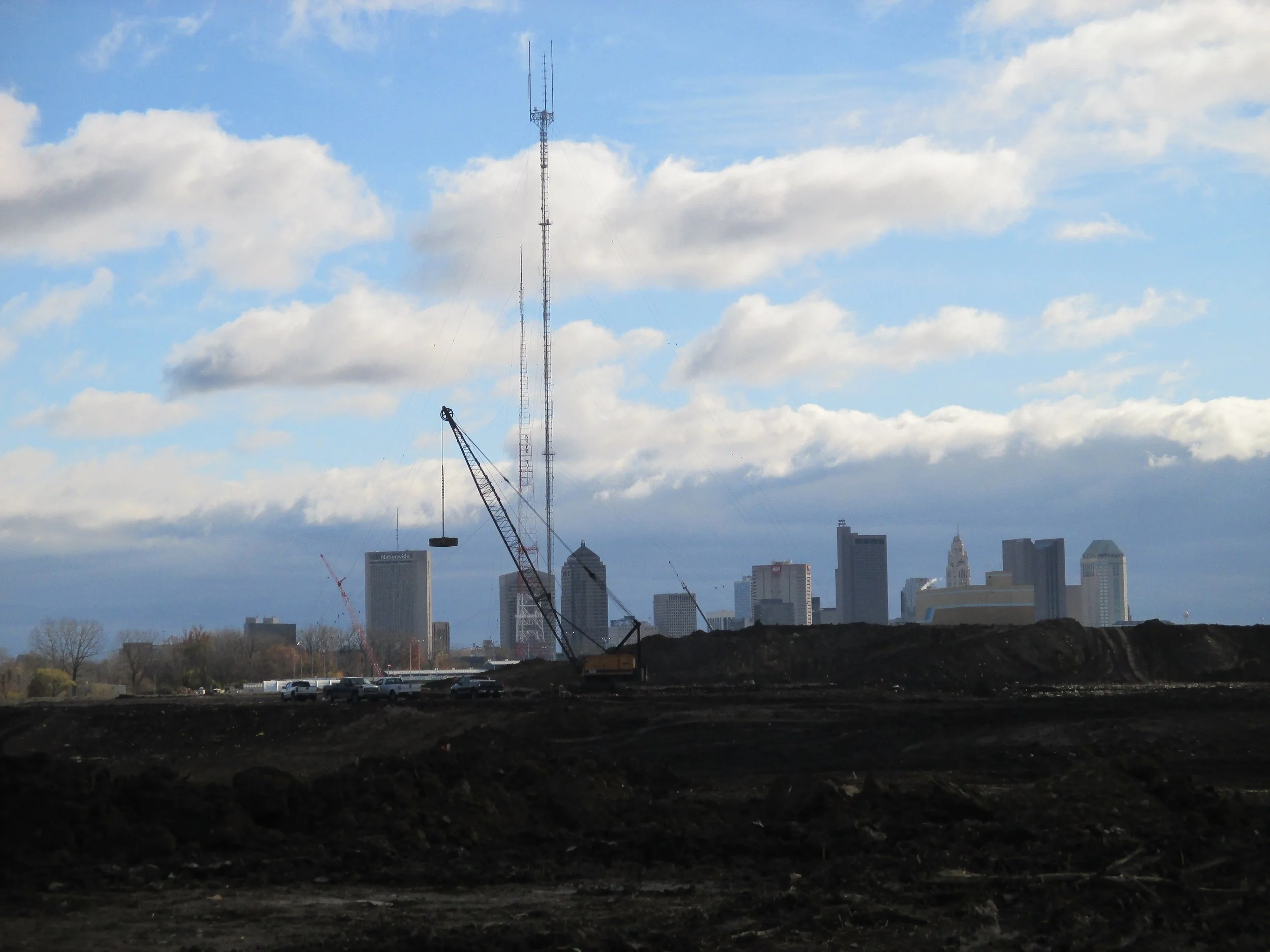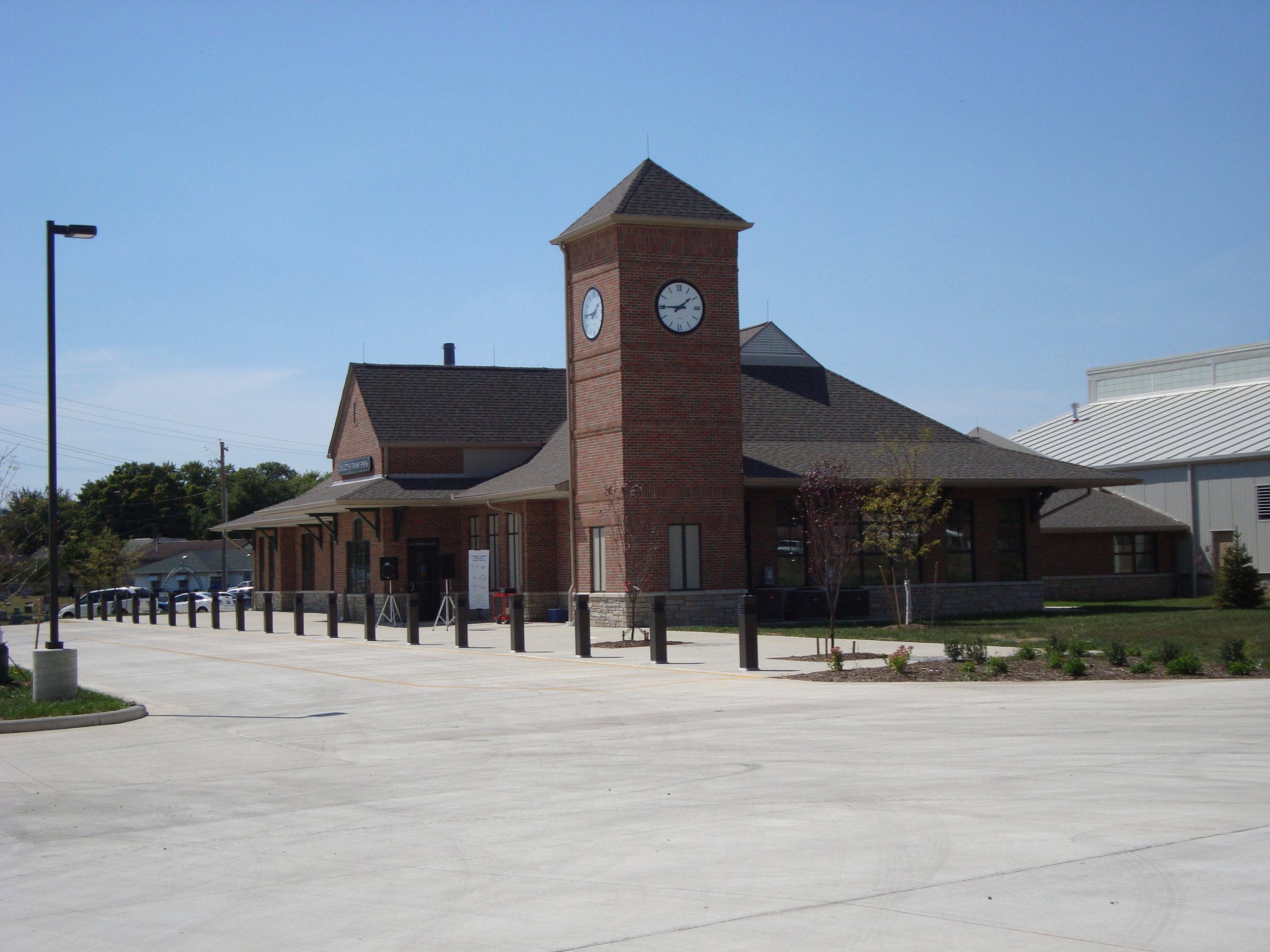
The Future of Brownfield Revitalization in Ohio
In 2021, Ohio Lawmakers approved the first allocation of funding for brownfield remediation work in Ohio in nearly 10 Years with the creation of the Brownfield Remediation Program. Two years later, lawmakers doubled-down on the program with a second appropriation of funds.
In total, the Ohio General Assembly has appropriated $700 million over four years to fund the remediation and redevelopment of brownfield sites across Ohio. While significant, there is still substantial work that must be done to revitalize the thousands of known and unknown brownfield sites throughout the state now and into the future.
Greater Ohio Policy Center is leading an effort to make permanent, sustainable funding for brownfield remediation available starting in 2027.
State Representatives Thomas Hall, Bride Sweeney Introduce HB93, Providing Long-Term, Sustainable Funding for State Brownfield Program
State Representatives Thomas Hall (R- Madison Twp.) and Bride Sweeney (D-Cleveland) have jointly introduced House Bill 93 on February 11. This legislation calls for permanent, long-term, sustainable funding for brownfield remediation beginning in 2025 and beyond, along with the re-establishment of the Clean Ohio Council.
“Ultimately, Brownfield funding is about community revitalization,” said Rep. Sweeney. “With this dedicated funding, we can turn Ohio’s aging and abandoned industrial infrastructure into the economic engine of Ohio’s future, turn abandoned factories into community parks, and turn toxic waste sites into centers for new jobs & economic opportunity.”
“Our goal with this legislation is to establish a stable, long term funding mechanism for brownfield revitalization so the work of assessing and renewing these contaminated sites can continue,” said Rep. Hall. “This legislation will provide private developers and community planners confidence that program funding will continue to be available as they continue to invest in Ohio’s growth.”
Ensuring the long-term sustainability of the state’s brownfield remediation efforts has been a priority for GOPC since the creation of the Brownfield Remediation Program (BRP) in 2021. Even before the BRP was created by the State Legislature in the state budget that year, GOPC has been leading the efforts at the Ohio Statehouse to fund a brownfield remediation program after the former Clean Ohio Remediation Fund was sunset in 2013.
“Having a sustainable, dedicated brownfield program will ensure Ohio remains the leader in brownfield remediation for years to come,” said Jason Warner, GOPC’s Director of Strategic Engagement. “We are grateful that Reps. Hall and Sweeney have agreed to partner on this important legislation and serve as leaders of the effort to remediate the state’s thousands of environmentally blighted sites.”
“Brownfields exist in every corner of the state of Ohio,” said Aaron Clapper, GOPC’s Director of Outreach and Projects. “It is often times cost prohibitive for local governments to be able to afford the cost of remediating brownfields. Ensuring these resources are available long-term is a priority for GOPC, and a priority for the State of Ohio.”
Brownfield remediation funding has the potential to positively impact every community in Ohio, from rural to urban communities. Brownfields are found in every county throughout Ohio, and state investment in brownfields will further help Ohio’s communities tackle these blighted properties and put them to productive use.
“Brownfield Remediation isn’t just the right thing to do, it's an opportunity to invest in Ohio’s future,” said Rep. Sweeney. “With these sustained dollars, Ohio will have the opportunity to finally retire the “Rust Belt” moniker for good.”
“Helping communities across the state experience economic development that can lead to jobs, increased tax revenue, business development, and new housing must be a priority for the state,” said Rep. Hall. “This bill will accomplish those priorities.”
Current Status:
Pending in the House Finance Committee (1 Hearing through May 20, 2025)
Frequently Asked Questions
-
House Bill 93 reinstates the Clean Ohio Revitalization Fund for brownfield remediation in Ohio.
Funding would be provided by allocating a portion of the revenue the State of Ohio receives each year from JobsOhio from excess liquor profits made available as part of the transfer agreement of the state liquor agency to the private agency in 2013.
This is expected to make between $50M-$100M in funds available for the program each year.
The bill also restores the Clean Ohio Council within the Ohio Department of Development. The Council, which would be chaired by the Director of the Department, with the assistance of the Director of the Ohio EPA, would be responsible for reviewing all applications and awarding grants or loans from the Clean Ohio Revitalization Fund, which is also established by the bill.
Grants or loans of up to $6 million would be awarded to up-to five brownfield clean-up projects each year. Loans may be forgiven if certain conditions are met as part of a loan agreement. Up to 20% of available funds are reserved under the bill for brownfield assessment grants.
Public or private entities would be eligible to receive funds under the program.
-
There are a number of differences between HB93 and the existing Brownfield Remediation Program (BRP).
1.) Dedicated Funding: HB93 has a sustainable dedicated funding source which would provide between $50M-$100M each year.
The BRP program relies on one-time funds approved every two years by the Ohio General Assembly.
2.) Competitive Funding: HB93 will award clean-up funds based on merit, after being reviewed and vetted by a panel of experts.
The BRP program is awarded on a first-come, first-serve basis, reducing opportunities for all communities to be able to compete for funds.
3.) Reserved Funds for Assessments: HB93 reserves 20% of available funding under the brownfield program for assessments, used to determine the scale of contamination on a potential brownfield site. These will come in the form of set-aside funds, with each county in Ohio receiving as much as $800,000 per year for assessments that would not need to compete with clean-up funds for grants.
The BRP provides funding for assessments, however applications compete directly with clean-up projects for funds.
4.) Anyone Can Apply for Funds: HB93 will permit public and private entities to apply for assessment or clean-up funds with no requirements for a third-party partner.
The BRP requires applications be submitted by a County Land Bank, or other entity designated by the board of county commissioners. Private entities are required to enter into agreements with the public entity to access funds.
-
When the State of Ohio leased the state liquor franchise to JobsOhio in 2013, the transfer agreement provided that JobsOhio was entitled to keep 20% of the excess profits that it received over and above the agreed rate, with the remaining 80% being returned to the state to pay-off the bonds the state financed to fund the Clean Ohio Program, continue to fund brownfield remediation projects, or to be directed to the state General Revenue Fund (GRF).
The bonds which the state financed have been fully repaid, and the full funds the state receives are fully directed to the GRF.
HB93 would direct 80% of the revenue received from JobsOhio to the new Clean Ohio Revitalization Fund, with the remaining 20% transferring to the GRF.
In FY2023, $104M in excess profit from JobsOhio was returned to the state GRF. This would have resulted in $83M being transferred to the Clean Ohio Fund.
This amount will fluctuate year by year, depending on the rate of profit. A range of $50M - $100M is a reasonable expectation.
Note: If no profits are available for transfer in any given year, there is no obligation on the part of JobsOhio or the state to provide funding to the CORF program under HB93.
-
If enacted by the Ohio General Assembly and signed into law by the Governor, the new CORF program would become operational on July 1, 2025 with the first transfer of funds to the new Clean Ohio Revitalization Fund.
Rules governing the program will need to be created, and appointments to the new Clean Ohio Council would need to be made before the program would become fully operational. This would occur sometime in state Fiscal Year 2026, which begins July 1, 2025 and ends June 30, 2026.
-
We are currently waiting for HB93 to be assigned to a committee in the Ohio House of Representatives. When that happens, it will be important for supporters to contact members of the committee to express support for the bill. This may include the need to testify either in person, or by submitting written testimony for the record.
To Contact Members of the Ohio House of Representatives, including the member or members representing your community, click here for a contact directory.
We also encourage you to contact members of the Ohio Senate, whose support for the bill will be necessary for final enactment. An Ohio Senate directory is available here.
When contacting members of the Ohio House and Ohio Senate, it is strongly encouraged to also contact members of leadership to express your support for HB93.
Finally, to stay up to date on everything happening with HB93, contact Aaron Clapper and Jason Warner with Greater Ohio Policy Center and you will be added to our brownfield updates listserv.




